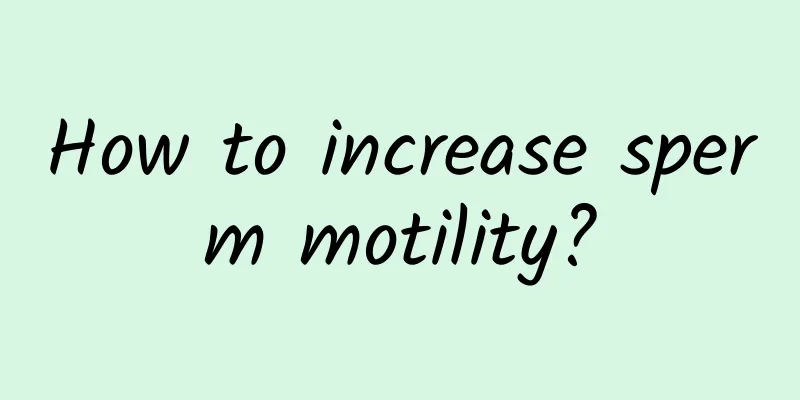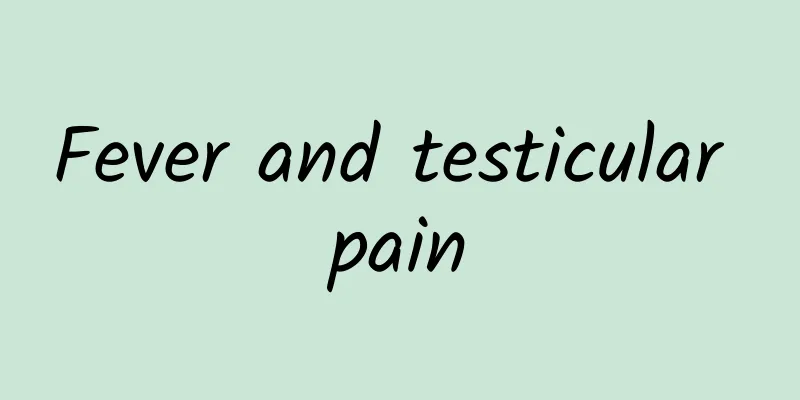What is the best tea for prostatitis?

|
Prostatitis is a common problem among male friends. You must persist in treatment after it occurs. Do not change medications at will during treatment. Frequent changes in medications will make your symptoms more complicated. Not only that, you must also make your sex life more regular and urinate frequently. This is a way to make prostatitis improve faster. 1. Adhere to the treatment and do not change the medicine or treatment method at will during the treatment period, because the relief of symptoms often takes a period of time. Early treatment should be maintained for more than 2 weeks, and some infections need 8 to 12 weeks. If the medicine is changed at will, it is easy to cause bacterial flora imbalance or drug resistance, resulting in incomplete treatment. 2. Have regular sex life, cannot hold back ejaculation, do not masturbate frequently, and avoid unclean sexual intercourse. 3. Correctly understand prostatitis, maintain a good attitude, and reduce psychological pressure to avoid exaggerating symptoms and causing dizziness, memory loss, anxiety, suspicion, insomnia and other symptoms. 4. Drink plenty of water, urinate frequently, keep bowel movements smooth, and insist on hot water sitz baths or hot water bags for the perineum. 5. Avoid smoking, drinking, and spicy food. Avoid sitting for long periods of time, avoid riding a bicycle for long periods of time, insist on exercising, preferably jogging and more lower body exercises, and avoid strenuous exercise. The detection of pathogenic pathogens in prostatic fluid culture is the basis for selecting antibacterial drug treatment. If patients with non-bacterial prostatitis have signs of bacterial infection and general treatment is ineffective, they can also be appropriately treated with antibacterial drugs. When choosing antibacterial drugs, it is necessary to pay attention to the presence of a prostate-blood barrier composed of lipid membranes between the prostate acini and the microcirculation. The barrier prevents the passage of water-soluble antibiotics, greatly reducing the treatment effect. When prostate stones are present, the stones can become a shelter for bacteria. The above factors constitute the difficulty in the treatment of chronic bacterial prostatitis, which requires a longer course of treatment and is prone to recurrence. Currently, quinolone drugs such as ofloxacin or levofloxacin are recommended. If ineffective, continue to use for 8 weeks. If recurrence occurs and the bacterial species remain unchanged, switch to preventive doses to reduce acute attacks and relieve symptoms. If long-term use of antibiotics induces serious side effects such as pseudomembranous colitis, diarrhea, and growth of intestinal resistant strains, the treatment plan needs to be changed. Whether non-bacterial prostatitis is suitable for treatment with antibacterial drugs is still controversial in clinical practice. Patients with "aseptic" prostatitis can also use drugs that are effective against bacteria and mycoplasma, such as quinolone drugs, SMZ-TMP or TMP alone, and tetracycline, quinolone drugs in combination or intermittent use. If antibiotic treatment is ineffective and it is confirmed to be aseptic prostatitis, antibiotic treatment should be discontinued. In addition, using a double balloon catheter to block the prostatic urethra and injecting an antibiotic solution from the urethral cavity into the prostatic duct can also achieve the treatment goal. Type I is mainly treated with broad-spectrum antibiotics, symptomatic treatment and supportive treatment. Type II is recommended to be treated with oral antibiotics, and sensitive drugs are selected. The course of treatment is 4 to 6 weeks, during which the patient should be evaluated for the efficacy. Type III can first take oral antibiotics for 2 to 4 weeks and then evaluate the efficacy. At the same time, non-steroidal anti-inflammatory drugs, α receptor antagonists, M receptor antagonists, etc. are used to improve urination symptoms and pain. Type IV does not require treatment. |
<<: How to prevent epididymitis
>>: What medicine can delay ejaculation?
Recommend
Why does sperm appear as water when it is ejaculated?
In fact, male friends are also prone to male dise...
What are the symptoms of a man's lack of energy?
According to traditional Chinese medicine, Qi and...
What are the symptoms of pyelonephritis in men?
Male pyelonephritis is a type of upper urinary tr...
Methods to enhance sexual function, the following foods have miraculous effects
Due to the increasing pressure of modern life and...
How to improve sperm motility?
What methods can we use to improve the motility o...
What is blood in ejaculation?
I wonder if you have ever encountered a situation...
What are the common symptoms of acute seminal vesiculitis?
Generally, when men feel that there is a strange ...
Acne on the face is caused by excessive internal heat
Many people are troubled by pimples on their face...
Why do I want to pee after ejaculation?
Sexual harmony is very important for men, and the...
What to apply to the glans penis to reduce sensitivity
The male glans will ejaculate after receiving cer...
What is prostate calcification and how can it be prevented?
What is the most common disease among men? Some s...
What to do if a man has inverted nipples
Nowadays, many men have found that they have the ...
What causes yellow semen? What is normal semen?
Yellow semen? This is a disease. This disease is ...
How to deal with impotence and premature ejaculation
I believe that some male compatriots have encount...
What are the lumps of flesh at the bottom of the glans?
Studies have shown that many men have some inflam...









